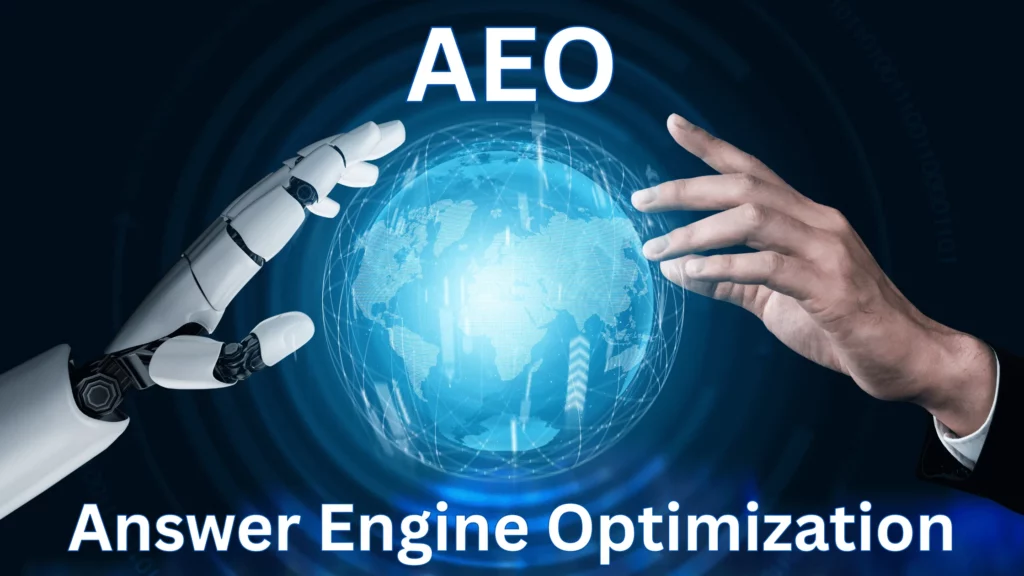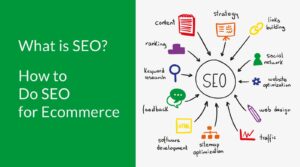
How Can Brands Future-Proof Themselves with AI-Focused Geo and AEO Strategies?
The world of digital marketing is going through a major change, the biggest since search engines were introduced. Old SEO methods that used to guarantee visibility are becoming less effective as artificial intelligence changes the way consumers find and engage with brands. It’s crucial for you to change your marketing strategy now, before your competitors gain an advantage that’s impossible to overcome.
Future-proof brand strategies require a significant change from traditional optimisation techniques to AI-focused methods. With the rise of generative AI search tools, there are new opportunities for content discovery, which means brands need to completely rethink their online presence.
Two groundbreaking strategies are emerging as game-changers in this new landscape:
- Generative Engine Optimization (GEO) – GEO Agency Australia optimising content for AI-powered search engines that generate responses rather than simply ranking pages
- Answer Engine Optimization (AEO) – crafting content specifically designed to provide direct, authoritative answers to user queries
These AI-focused strategies represent the next evolution in digital marketing, moving beyond traditional keyword targeting to focus on semantic understanding and contextual relevance that AI systems can interpret and utilise effectively.
What Are AI-Focused GEO and AEO Strategies?
Generative Engine Optimisation (GEO) represents a fundamental shift in how brands structure content for AI discovery. This strategy focuses on creating machine-readable content that generative AI systems can easily process, understand, and reference when generating responses to user queries. GEO transforms traditional content into structured, AI-friendly formats that increase the likelihood of brand mentions in AI-generated answers.
Answer Engine Optimisation (AEO) complements GEO by specifically targeting how content appears in direct AI responses. You optimise content to become the definitive source that AI search tools reference when providing immediate answers to user questions, positioning your brand as the authoritative voice in your industry.
These strategies diverge significantly from traditional SEO and SEM approaches:
- Traditional SEO targets search engine rankings through keywords and backlinks
- SEM focuses on paid advertising placements in search results
- GEO and AEO prioritise AI comprehension and citation-worthy content structure
Generative AI search tools like ChatGPT, Claude, and Google’s Bard fundamentally reshape optimisation requirements. These platforms don’t simply index web pages—they analyse, synthesise, and regenerate information. Your content must demonstrate clear expertise, provide structured data, and maintain factual accuracy to earn citations in AI responses.
The shift demands machine-readable content that speaks directly to AI algorithms whilst remaining valuable for human readers. This dual-purpose approach ensures your brand remains visible across both traditional search engines and emerging AI platforms.
Why Is Future-Proofing a Brand Necessary in the Age of AI?
The digital landscape is undergoing a massive change that poses a threat to traditional methods of brand visibility. Industry analysts predict a 25-50% decline in website traffic by 2026 as AI search engines fundamentally change the way users discover and consume information. This dramatic transformation is happening because generative AI tools are providing direct answers without users having to click through to source websites.
Being competitive in the digital world now depends on understanding this shift. When users ask ChatGPT, Claude, or Google’s Bard a question, they receive comprehensive responses that often eliminate the need for further research. Your brand’s carefully crafted content might inform these AI responses, yet you receive no traffic, engagement, or conversion opportunities from that interaction.
Risks of Ignoring AI-Driven Search Impact
Brands that ignore the impact of AI on search face three critical risks:
- Invisibility in AI responses – Your content becomes training data without attribution
- Reduced organic discovery – Fewer users navigate to your website naturally
- Competitive disadvantage – Forward-thinking competitors capture AI-optimised visibility
Importance of Future-Proofing Brand Strategies
To protect your brand’s future, you need to take immediate action. Companies like SEO Henderson Advocacy already show how investigating data can uncover opportunities for optimising with AI that traditional SEO metrics completely overlook.
The brands that are adapting their content structure, metadata setups, and ways of delivering information today are positioning themselves as authoritative sources. As a result, AI systems will consistently reference and recommend them.
This shift requires more than just small tweaks to existing strategies. It necessitates a complete overhaul of how your brand presents information to both human users and AI systems that increasingly mediate those interactions.
How Does Generative Engine Optimisation (GEO) Work?
GEO strategies operate through two distinct layers of optimisation that transform how AI systems discover and process your content. Understanding these mechanisms helps you build machine-readable content that generative AI tools can effectively interpret and utilise.
Page-Level Optimisation Tactics
Page-level optimisation focuses on individual content pieces through specific structural elements:
- Q&A fields – Structured question-and-answer formats that directly address user queries
- GEO-specific metadata – Custom meta tags designed for AI comprehension rather than traditional search engines
- Markdown summaries – Clean, formatted content blocks that AI models can easily parse and extract
These elements create clear pathways for AI systems to understand your content’s purpose and relevance. You’ll find that implementing these tactics requires rethinking content structure from an AI-first perspective.
Site-Wide Optimisation Framework
Site-wide optimisation establishes comprehensive systems across your entire digital presence:
- llms.txt files – Machine-readable instructions that guide AI crawlers through your site architecture
- Topic templates – Standardised content frameworks that ensure consistency across related pages
- Bulk metadata population – Automated systems that apply structured data at scale
The foundation of effective GEO lies in creating trustworthy and structured content that AI models can confidently reference. Your content must demonstrate authority through consistent formatting, accurate information, and clear hierarchical organisation that mirrors how generative engines process and present information to users.

What Analytics Are Essential for Measuring GEO Effectiveness?
GEO analytics represent a fundamental shift from traditional SEO metrics, requiring marketers to track entirely new performance indicators. These specialised measurements focus on how effectively your content performs within AI-powered search environments rather than conventional search engine results pages.
The GEO health index serves as your primary dashboard metric, combining multiple data points to provide a comprehensive view of your content’s AI discoverability. This index evaluates factors such as content structure quality, metadata completeness, and AI model compatibility across your entire digital presence.
Crawl-to-refer ratio measures the efficiency of AI model interactions with your content. You’ll want to monitor how frequently AI systems access your pages compared to how often they reference your content in generated responses. A healthy ratio indicates that your content structure aligns with AI processing requirements.
Crawl rate by model type breaks down performance across different AI platforms and models. You can identify which generative engines favour your content and which require optimisation adjustments. This granular data helps you prioritise resources towards the most impactful AI platforms for your audience.
These metrics enable continuous strategy refinement by revealing content gaps and optimisation opportunities. You’ll discover which pages perform exceptionally well with AI systems and replicate those successful elements across your broader content strategy. Regular monitoring of these GEO analytics ensures your brand maintains visibility as AI search technologies continue evolving.
How Does Answer Engine Optimisation (AEO) Complement GEO?
Answer Engine Optimisation shifts your content strategy from ranking pages to becoming the definitive source for AI-powered answer engines. You’re no longer competing for click-through rates—you’re positioning your brand as the authoritative voice that AI systems quote directly to users.
AEO diverges from traditional SEO by prioritising direct answer visibility over page rankings. Traditional SEO focuses on driving traffic to your website through search results. AEO ensures your content appears as the answer itself, whether users interact with ChatGPT, Claude, or emerging AI search platforms. You’re essentially becoming the content that AI systems trust and reference.
Key AEO Strategies Include:
- Structured answer formats that AI can easily parse and present
- Authority signals through expert citations and credible sources
- Conversational content that matches natural language queries
- Topic depth that demonstrates comprehensive knowledge
The synergy between AEO and GEO creates a comprehensive AI optimisation approach. GEO ensures your content gets discovered by AI crawlers, whilst AEO guarantees that discovered content becomes the preferred answer source. Brands like those working with agencies such as Covert are already implementing this dual strategy to maintain relevance across both traditional search and AI-driven platforms.
You’re building a foundation where your expertise becomes embedded in AI responses, creating sustained brand authority that transcends individual search queries.
What Role Do Advanced CMS Platforms Play in Supporting AI-Focused Strategies?
Advanced CMS platforms have evolved beyond traditional content management to become sophisticated engines for AI-driven optimisation. These platforms now integrate content management integration capabilities that automatically generate GEO-specific metadata, create structured data schemas, and populate bulk content optimisations across entire websites.
Modern marketing solutions within these platforms include:
- Automated metadata generation that creates AI-readable summaries and descriptions
- Structured content templates designed specifically for generative AI consumption
- llms.txt file management for improved AI model communication
- Markdown summary creation that enhances content discoverability
The most advanced systems offer scalable content creation workflows that transform existing content into AI-optimised formats without manual intervention. You can now deploy topic templates across thousands of pages whilst maintaining consistency in your GEO and AEO implementation.
These platforms function as strategic partners rather than simple tools. They provide real-time analytics on AI discovery rates, automated A/B testing for different optimisation approaches, and intelligent content suggestions based on emerging AI search patterns. The integration capabilities allow seamless connection with existing marketing stacks, ensuring your Future-Proof Your Brand with AI-Focused Geo and AEO Strategies implementation doesn’t disrupt current operations.
The sophistication of these platforms means you can maintain competitive advantage through automated optimisation processes that adapt to changing AI algorithms without constant manual oversight.
How Can Brands Implement Effective AI-Focused Geo and AEO Strategies Today?
Data investigation serves as the cornerstone for successful AI-focused optimisation. You need to audit your current content performance across traditional search engines whilst simultaneously analysing how AI systems currently interpret your brand information. This dual-approach assessment reveals gaps between your existing SEO strategy and the requirements for effective GEO and AEO implementation.
Essential Implementation Steps
- Content Audit and AI Readiness Assessment
- Review existing content for structured data compatibility
- Identify pages requiring Q&A field integration
- Assess current metadata quality for AI consumption
- Technical Infrastructure Development
- Implement llms.txt files across your domain
- Create topic-specific templates for consistent AI discovery
- Establish automated metadata generation workflows
- Strategic Content Optimisation
- Develop Markdown summaries for key pages
- Structure content to answer specific user queries directly
- Create trustworthy, citation-worthy content formats
Strategic partnerships with specialised agencies accelerate your transition to AI-focused marketing. Agencies like SEO Henderson Advocacy bring deep expertise in GEO implementation for complex buyer journey optimisation, whilst performance-driven marketing specialists such as Covert provide comprehensive digital transformation support.
E-commerce brands can learn from TenX Pro’s approach to integrating AI-focused strategies with traditional conversion optimisation. Their methodology demonstrates how product-focused businesses can maintain sales performance whilst adapting to AI-driven discovery patterns.
You must begin implementation immediately, as AI search adoption continues accelerating across all demographics and industries.

What Are the Long-Term Benefits of Adopting These Strategies?
1. Sustained Online Visibility
Sustained online visibility becomes your brand’s strongest asset when AI search engines reshape how consumers discover products and services. You position yourself ahead of competitors who remain dependent on traditional search methods whilst your content seamlessly integrates with generative AI platforms.
2. Competitive Advantage
Smart content scaling delivers competitive advantage through automated optimisation processes. Your investment in GEO and AEO strategies creates scalable machine consumption content that adapts to multiple AI platforms simultaneously, reducing manual effort whilst expanding reach.
3. Trust and Authority Building
Trust and authority building accelerates in AI-dominant environments where algorithms prioritise credible, structured information. You establish your brand as a reliable source when AI systems consistently reference your optimised content for user queries.
4. Self-Reinforcing Cycle
The compound effect of these strategies creates a self-reinforcing cycle:
- Enhanced discoverability across emerging AI platforms
- Reduced dependency on traditional search traffic
- Improved content ROI through multi-platform optimisation
- Stronger brand positioning in voice and visual search results
Your early adoption of AI-focused strategies transforms potential disruption into sustainable growth, ensuring your brand remains discoverable regardless of how search technology evolves.
More to Read : How an AEO Agency Uses Structured Data to Boost AI Visibility





